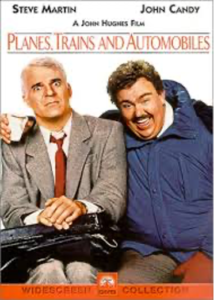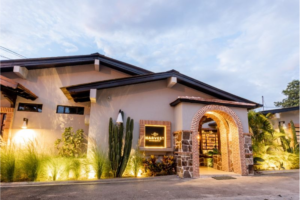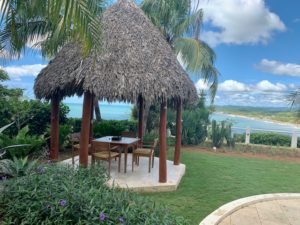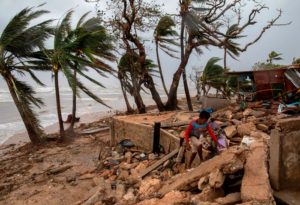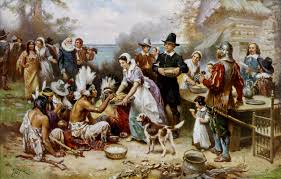“Darkness cannot drive out darkness; only light can do that.” – Martin Luther King, Jr.
You Are Who You Are: Be Thankful for That!
It’s damn hard to be thankful.
We know we should. Every shrink, spiritual leader, and self-help guru on the planet espouses the many benefits of being thankful. But it’s hard to do.
That’s because “doing” thankfulness means feeling it – actually feeling grateful in the muscles of the heart.
I have a sort of prayer that I recite every morning: I’m grateful for my health. I’m grateful for my family. I’m grateful for my work, etc. I recite this dutifully and with concentration. But its effect on me has been only a bit stronger than practicing positive affirmations – which is to say, not great.
I do feel grateful now and then. But the feeling doesn’t come when I call for it. Like happiness, gratitude arrives spontaneously, dressed in workaday clothes, ushered in by mundane and trivial matters. Like finding my boarding pass a minute before they close the doors. Or recognizing a familiar landmark when I’m driving, lost on a dark road.
The important things that I should be grateful for – life, liberty, and my right to happiness, for example – I appreciate most in their absence.
I don’t think I’m alone in this. If you’ve been striving to experience more gratitude in your life, you might have noticed the same thing.
Consider this…
A Possible Solution
The feeling of gratitude is indisputably a positive emotion. It feels like breathing. Like opening up and becoming lighter.
But there are other emotions that feel very different – sort of like the opposite of gratitude.
They make you feel like you’re being squashed. Like you’re suffocating or drowning. They make your heart race and weaken your muscles. They feel like pressure, like tightness, like you can’t breathe.
Do you know what I mean?
These opposite-of-gratitude feelings – there are lots of them! Feeling ignored, unappreciated, or disrespected. Or insulted, excluded, or misunderstood. Or robbed or cheated or taken advantage of. Or mentally or physically abused. Or just generally feeling victimized – whether by individuals, society, or even the universe.
So, here’s my thesis: Maybe the secret to feeling more gratitude is to make more room for it by clearing out these other feelings.
Maybe, rather than making lists of all the things we should be grateful for, we should make a list of all the opposite-of-gratitude feelings we have, consciously or subconsciously, and focus our attention on getting rid of them first.
I’m talking about clearing out the dark shadows in our hearts and brains. Letting the sunshine in.
To be honest, this is not a brand-new thought for me. I’ve been thinking about it – and even working on it – for more than 50 years.
One of the first negative emotions I tried to banish was jealousy. By the time I was 16, I had figured out that it was, indeed, a green-eyed monster. I understood the stupidity of it, and vowed to excise its gangrenous hold on my heart. But I was an adolescent, and the biology of adolescence is selfish and self-centered. So, I was not entirely successful. (I still succumb to jealousy’s poison today. But rarely.)
I was much more successful in my early attempts to banish most forms of envy. Although I had much to be envious about as a child, it never had a strong hold on me. In fact, if I ever felt envious of anything or anyone, I don’t remember it. I was surrounded by people then – and still am – who were (and are) richer, smarter, funnier, and better looking. But I didn’t/don’t envy them. I don’t know why envy was so easy to exorcise while jealousy wasn’t, but I do know that not being envious has allowed me to feel good about those that have more than I do. By clearing out envy, I’ve been able to let a sort of happiness in.
There is, however, a kind of envy that I have not entirely banished. And that’s the feeling of resentment I had in high school for my classmates that had a higher social status. I thought I had rid myself of feeling socially discounted and underprivileged. But when I went to my last high school reunion, I realized that I hadn’t entirely forgiven my classmates that had been fortunate enough to grow up on the “right” side of town.
There are many other negative emotions – some that set in later in life – that, until recently, I allowed myself to feel, even though they were self-destructive. One of them was about my body image. In my youth, I was always unhappy with my skinniness. Despite lifting weights like a maniac, I was never able to pack on muscle. I started as a linebacker and offensive guard for my high school football team. I was somehow able to do that with sheer aggressiveness at 155 pounds. But when I failed to make the cut for college football, I cursed my body’s inability to grow.
After I turned 40, my body took revenge on me. I ballooned to 230 pounds (still weightlifting) and have struggled to get back down to a respectable 200 pounds ever since. Every time I stepped on the scale and found myself heavier than that (which was almost always), I cursed my genes.
I was also angry at my biology every time I caught a cold. K never got sick. She went years without a sniffle or an ache, but I… I was catching every bug that came along! I was taking supplements. I was eating my damn greens. Why did I get stuck with this crappy immune system?
But the most negative emotions I allowed myself to feel had to do with my self-imposed mental goals and expectations. I would get furiously upset when I’d arrive late to an appointment, and yet I was late to appointments almost without fail! (While I was publishing Early to Rise, my friend AS used to say, “Early to rise, but late for everything else.”)
I would get angry when I failed to accomplish any and every project I committed to. It didn’t matter to me that my failure might have been due to situations beyond my control. Or that the expectation itself was entirely unrealistic. I mentally flagellated myself.
I would constantly chastise myself for the writing I did that was, in looking at it later, not very good. I would do the same whenever I couldn’t keep up with my work, even if I was working (as I often did) 70 to 80 hours a week.
And then there was the self-derision that ensued every time I failed to meet other people’s expectations. Whether it was friends, family, business associates, or even strangers, I allowed myself to take on their expectations of what I should do or be.
I always knew that these negative feelings came from me and my own expectations. I always knew that they were impossible to avoid so long as I took them on. I always knew that they were making me miserable. And yet, I allowed myself to have them.
Finally, a change of heart
One day recently, in my 69th year, this all changed. I am still struggling to figure out how and why – but one day I woke up and thought to myself: “You are forgiven.”
I know how that sounds. Like New Age, narcissistic rubbish. But that is what it was – a single thought. “You are forgiven.”
I will try to figure it out in a future essay. But for today, I will simply tell you what did and didn’t happen. What didn’t happen was a transformation in my behavior. I continued to set goals for myself that I couldn’t achieve. I continued to try to live up to other people’s expectations. But when I failed, I no longer beat myself up about it. The impulse wasn’t there. And so far, it hasn’t returned.
How to explain?
I feel like Popeye! I yam what I yam, and that’s all that I yam!
The shadows are gone. All that space in my heart that they were occupying is open now to better feelings. When I fail now – and I’m not making this up – I feel a little smile on my face. And for that, I am very, very thankful.
This essay and others are available for syndication.
Contact Us for more information.

